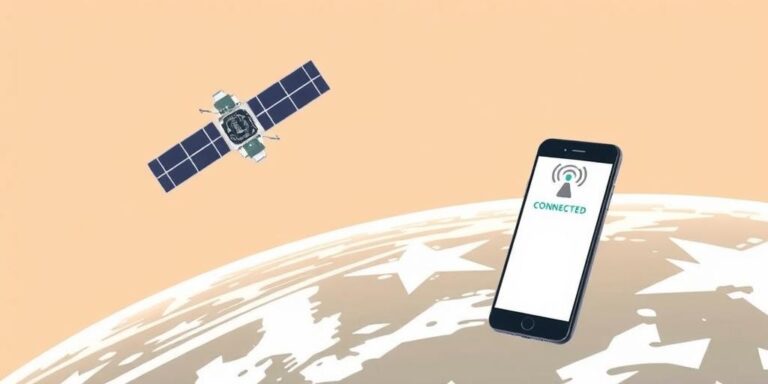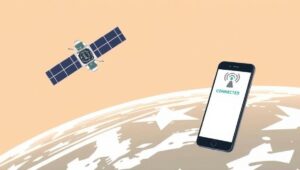Satellite-to-Device Connectivity: The Next Frontier (Beyond Emergencies)
For years, satellite connectivity on smartphones was largely a theoretical concept. Recent advancements have transformed this idea into reality, with current applications primarily focused on emergency services. However, the future of satellite-to-device (S2D) connectivity extends far beyond these crucial but limited use cases. This article will explore the expected evolution of S2D technology and its potential applications by 2026.
Current State: Emergency SOS and Limited Messaging
Today’s S2D implementations predominantly offer:
- Emergency SOS: Allowing users to send distress signals from areas with no terrestrial cellular coverage.
- Basic Messaging: Enabling short text messages to be sent and received in specific situations.
These features rely on dedicated satellite networks and require specialized hardware in smartphones. While invaluable for safety, they represent just the starting point.
The S2D Landscape in 2026: A Broader Horizon
By 2026, S2D connectivity is projected to mature significantly, driven by several factors:
- Technological Advancements: Improved satellite technology, more efficient antennas, and sophisticated signal processing techniques will enable higher bandwidth and lower latency.
- Increased Satellite Coverage: The launch of more low Earth orbit (LEO) satellites will expand global coverage and reduce dead zones.
- Standardization Efforts: Industry collaboration on standards will facilitate interoperability between devices and networks.
Expected Applications Beyond Emergency Use:
-
Ubiquitous IoT Connectivity: S2D will provide a reliable backhaul for IoT devices deployed in remote locations, enabling applications such as:
- Precision Agriculture: Monitoring soil conditions, livestock tracking, and automated irrigation in rural areas.
- Environmental Monitoring: Tracking wildlife, measuring air and water quality in pristine environments.
- Smart Infrastructure: Connecting sensors on remote pipelines, bridges, and power grids.
-
Enhanced Connectivity for Remote Workers: Individuals working in remote areas (construction sites, research outposts, or maritime vessels) will gain access to reliable communication and data transfer capabilities, facilitating:
- Video Conferencing: Enabling real-time collaboration and communication.
- Data-intensive Applications: Supporting cloud-based workflows and data analysis.
- Remote Monitoring and Diagnostics: Allowing experts to remotely diagnose and repair equipment.
-
Global Messaging and Data Services: S2D will facilitate seamless communication across borders, enabling:
- Global Roaming: Providing continuous connectivity for travelers in areas with limited or no terrestrial coverage.
- Direct-to-Device Messaging: Enabling users to send and receive messages directly via satellite, bypassing cellular networks.
- Content Delivery: Delivering software updates, news, and other content to remote areas.
-
Connected Vehicles: S2D will provide a crucial layer of redundancy for connected vehicles, ensuring safety and reliability in areas with poor cellular coverage:
- Emergency Assistance: Providing a backup communication channel for emergency calls and vehicle diagnostics.
- Over-the-Air Updates: Delivering software updates and map data to vehicles in remote areas.
- Autonomous Driving Support: Enhancing the reliability of autonomous driving systems by providing redundant positioning and communication capabilities.
Challenges and Opportunities
Despite the vast potential, several challenges remain:
- Cost: S2D connectivity is currently more expensive than terrestrial cellular services. Reducing costs will be crucial for widespread adoption.
- Regulatory Hurdles: Clear regulatory frameworks will be needed to govern spectrum allocation and licensing for S2D services.
- Technological Complexity: Developing and deploying S2D technology requires significant engineering expertise.
Overcoming these challenges will unlock tremendous opportunities for innovation and economic growth. S2D connectivity is poised to transform various industries and improve the lives of people around the globe.
Conclusion
The future of satellite-to-device connectivity extends far beyond emergency use. By 2026, we can expect to see a wider range of applications emerge, driven by technological advancements, increased satellite coverage, and standardization efforts. From ubiquitous IoT connectivity to enhanced communication for remote workers and connected vehicles, S2D has the potential to revolutionize the way we connect and interact with the world.




